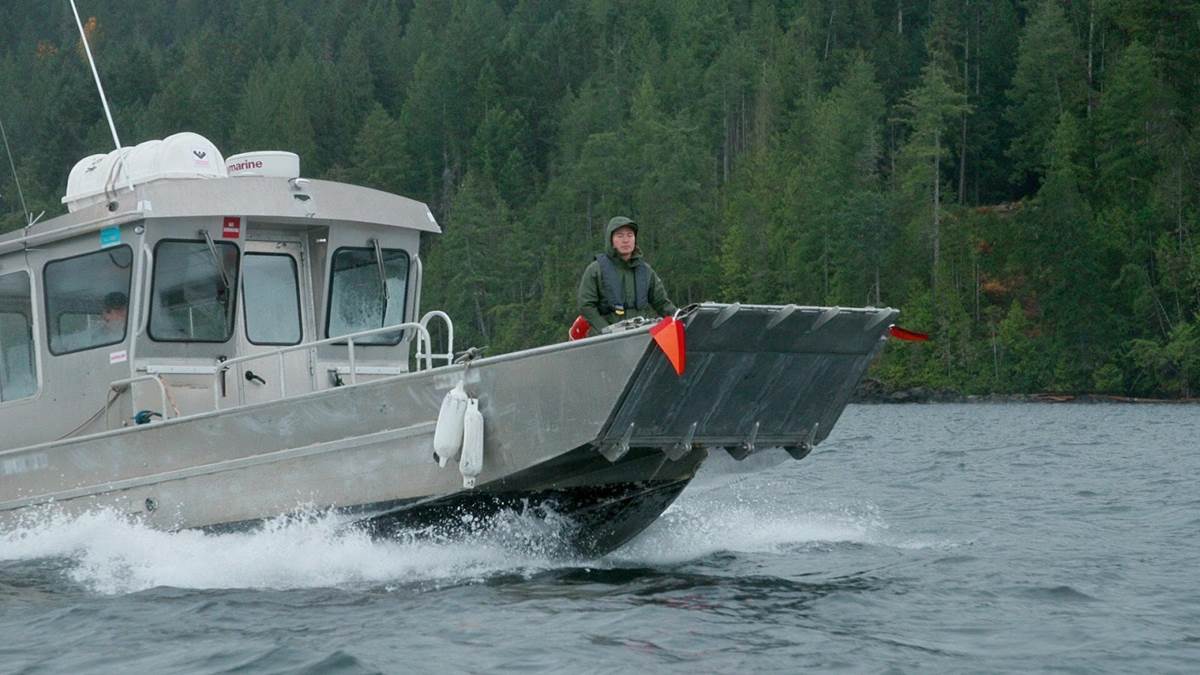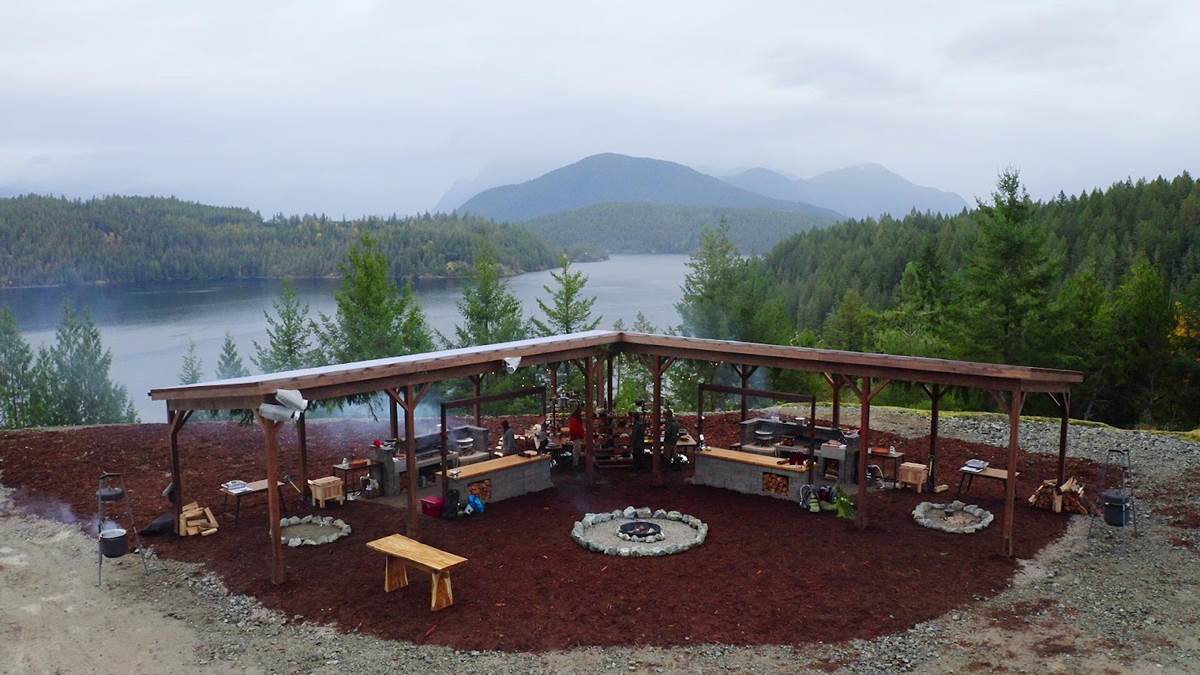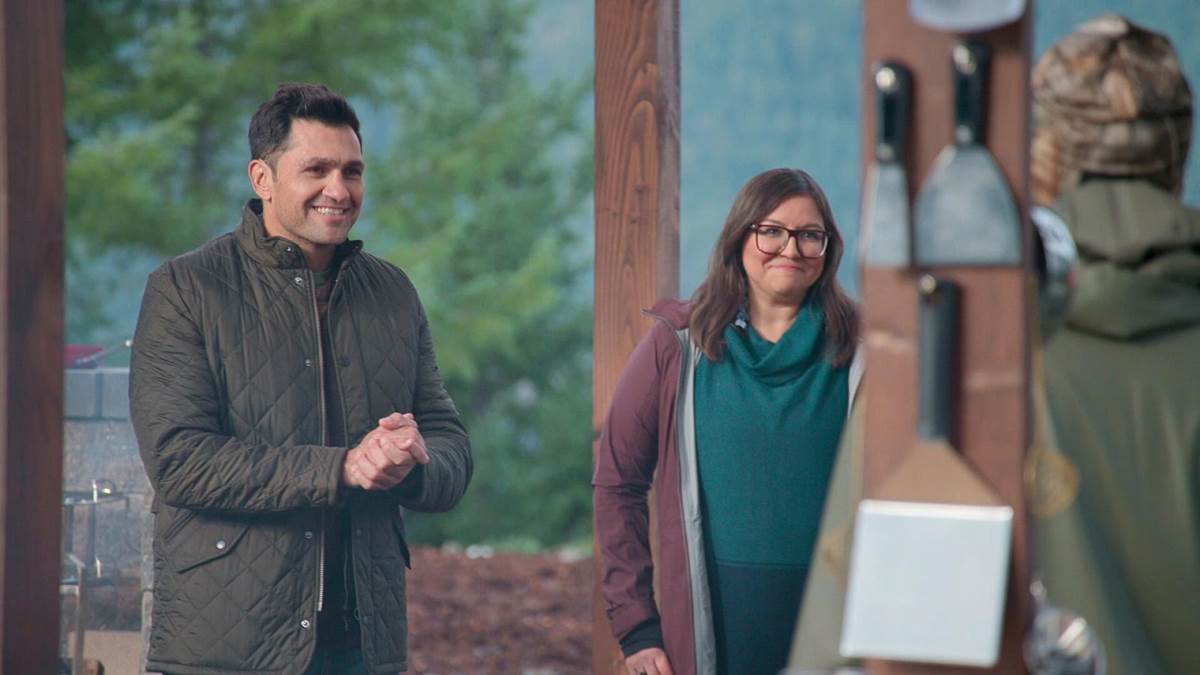TV Review: “Chefs vs Wild” Experiments with Survival and Culinary Skills in Hulu’s New Reality Show
Chefs vs Wild is Hulu’s latest foray into the culinary sphere and this time they’re taking things to the extreme, the nature extreme that is. What happens when you drop two experienced chefs onto an island in British Columbia and give them two days to forage for food? Well they find incredible sources of edible goods that will flavor, season and complete a 3-course meal in a culinary showdown.
The show is part culinary competition and part nature special on survival as it pits chefs against each other to see who can make the best 5-star quality meal using the very ingredients they foraged for. Contestants are given 48-96 consecutive hours in the wild to find food from Mother Earth that they’ll then turn into a gourmet meal consisting of appetizer, entree and dessert. Of course, they’re not entirely on their own as each chef is paired with a survivalist expert who guides the chefs to food sources, helps with setting up shelters and provides life saving advice.

(Courtesy of Hulu)
While the teams have to forage for most of their cooking ingredients, they will be provided with a protein at cookoff and they’re told in advance what it is. Then it’s just a matter of dreaming up their dishes. Mushrooms are one of the first items the chefs are anxious to acquire, while pine needles, sumac, juniper berries, oysters and ocean water —for poaching— are among the other highly coveted items on their lists. And as new ingredients are acquired, cards pop up on screen explaining the use and value of each find.
After days of foraging, the chefs and experts return to the Wilderness Kitchen where a four-hour cookoff will end with one chef declared the winner. The gorgeous kitchen is well stocked with multiple wood stoves, small fire pits, grills, and cast iron cookware. Considering that the chefs must prepare three courses, I assume ingredients like acorn flower, honey, sugar and cream that are used are readily available too.

(Courtesy of Hulu)
Chefs vs Wild doesn’t have the same energy as other cooking competitions and while I’m sure that’s by design, audiences interested in the culinary side of things will likely wish for more kitchen drama and less of the landscape. That said, the show does a great job jumping between the groups and gives ample time to the cooking and judging segment which easily makes up the latter third of the episode.
Chef and adventurer Kiran Jethwa serves as the host and judge and joining him for the final food critique is Valerie Segrest, a member of the Muckleshoot Indian Tribe and expert on living off the land. Her insights into the dishes and unique ingredients help make this approachable for the audience even if they will never sample or serve anything quite so exotic.

(Courtesy of Hulu)
As for the cast, the chefs are not only well paired with their guides, but also against each other. Everyone is matched with someone of equal skill and while it’s ultimately a competition, there’s the knowledge of the shared experiences that brings a vibe of comradery and respect to the kitchen. It's quite refreshing to see.
Chef vs Wild feels like a National Geographic nature special meets Iron Chef, especially with the long overhead shots of the island and perfectly distanced shots of the teams as they’re exploring the land around them. As someone who grew up in a home where the television remained off most days, this is the type of show I would have loved as a kid because it covers the bases of education and entertainment, something I could successfully argue I should be allowed to watch!
Chefs vs Wild is geared towards an older audience, but is likely something that families with tweens can enjoy together. I had the opportunity to screen a few episodes, and viewed the first in its entirety, but found myself skipping to the end for the cookoff on the others. Fans of the survival show format will appreciate the drama, intensity, and challenges presented while foraging, while those who love culinary competitions will be anxious for the teams to get into the kitchen.
The first two episodes of Chefs vs Wild debuts today on Hulu with subsequent episodes premiering every Monday.



